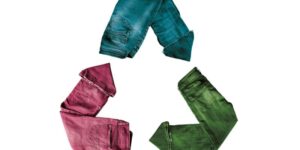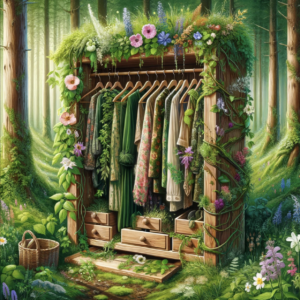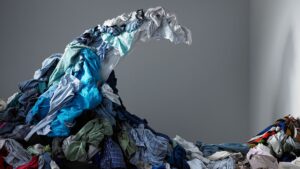Governments, designers, scientists, and technology entrepreneurs are wracking their brains over sustainability more than ever before. A topic that has long been approached as a trend is now in its utmost seriousness. And it deserves to be so…
Where Are We In Terms of Sustainability Goals In Fashion?
The fashion world is one of the most scrutinized mediums. Especially since it is the fortress of consumer culture, it is right at the center of the topic. There are significant efforts to improve production processes and to bring back to life the items that are on their way to the landfill.

Let’s face it, we are all in some way part of this world, needing to consume something. It’s hard not to be carried away by the wind of fast fashion. The change in the fashion system and the culture of trends are so strong that they can even draw in the most conscious among us. After all, we are talking about formulas that have been established for years.
What we call fashion is a product or producer of the culture of the era lived. This means that fashion includes different stages such as social, cultural, ecological, logistical, and financial. In the current situation, however, the raw materials, energies, and natural resources excessively spent for each stage are unfortunately depleted. Nothing has lasted forever, after all…
The Sustainability Lie
Let’s get straight to the point. Uber organic products made from bizarrely named substances cannot provide the necessary savings. Thousands of liters of water are being spent on what we innocently know as 100% cotton. It’s worth mentioning that so-called eco-friendly vegan leathers also use too much chemical and plastic, so there’s no situation of being better.

Moreover, as consumers, we should ask ourselves how much we are ready to compromise on quality for the sake of sustainability. For these reasons and more, another goal of sustainable fashion should also be to create developing ecosystems and communities with its activities.
The Age of Waste
Both the production and consumption of this business are separate causes of concern. Add to the pollution created during the production process the volume of unwanted clothing waiting in the mothballed corners of wardrobes and trash bins.
According to the Ellen MacArthur Foundation, which works to promote sustainability, clothing production roughly doubled from 2000 to 2015! In the same period, the number of times a garment was worn decreased by 36 percent. Moreover, the report states that “Every second, a garbage truck’s worth of clothes is burned or dumped in a landfill.(1)” The situation is more dire than ever…

Also, while we’re on the subject, it would be remiss not to mention the news that Burberry burned about £28.6 million worth of unsold products in 2018 (2). The biggest reason for doing this was, of course, to not diminish the brand value through discounts. Clearly, white people’s problems… As expected, they’re not the only company suffering from this quality burden. This approach of preferring to destroy natural resources rather than devaluing the brand is just one of the industry’s dirty secrets and probably just a small part of the iceberg that we see.
Is There No Solution?
Sustainable fashion is a very deep topic with many dynamics. There isn’t a single and final solution, as it seems. When we think about what we should do, finding a balance seems to be the best approach. Especially in such topics, encountering extreme arguments from different perspectives is quite common. Making conscious purchases is the most important step. We might need to spend a little time researching where we buy our stuff. But by doing so, you can find your brands. It might be beneficial to establish serious, long-term relationships by buying what we truly need, instead of only buying second-hand or only organic products.

At Coventum, we place great importance on the sustainability of our products. We are in the line of slow fashion. So, we take an ethical and sustainable approach to producing our products. We aim to create timeless models with high-quality over-trend-driven pieces destined for the landfill after a few wears.
Our completely handmade products are now produced using yarns, fabrics, and leather pieces. As a newly established startup, although we haven’t achieved 100% sustainability, we are working to implement our projects for a sustainable fashion future. We are designing a collection that will transform fabric pieces and defective clothes into brand-new products. We don’t know a garment that can’t become dazzling with a bit of imagination and craftsmanship! Upcycling is a long and laborious process; you can check out our existing products in our store until it’s completed.
